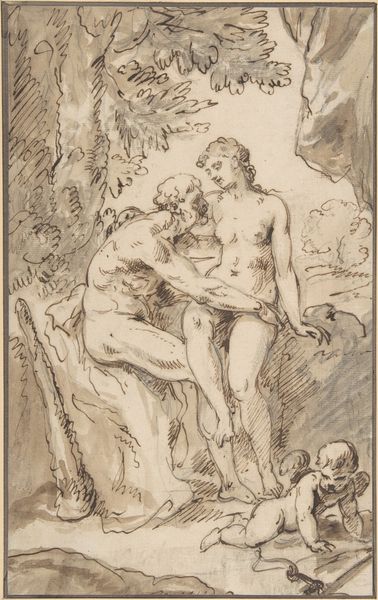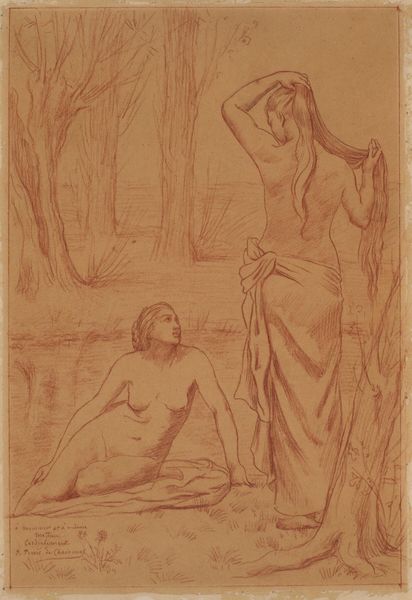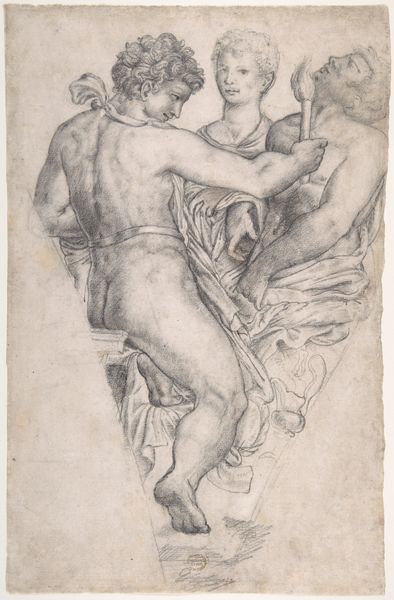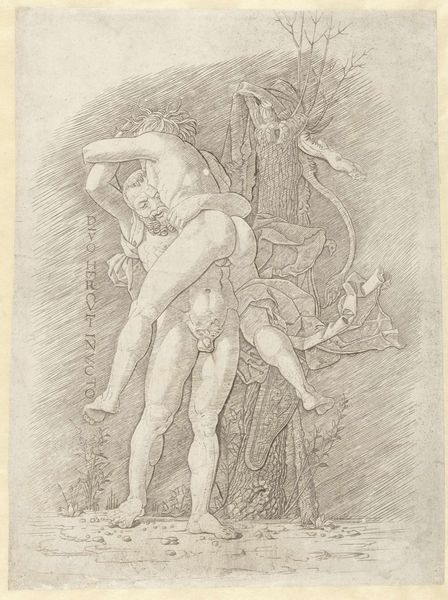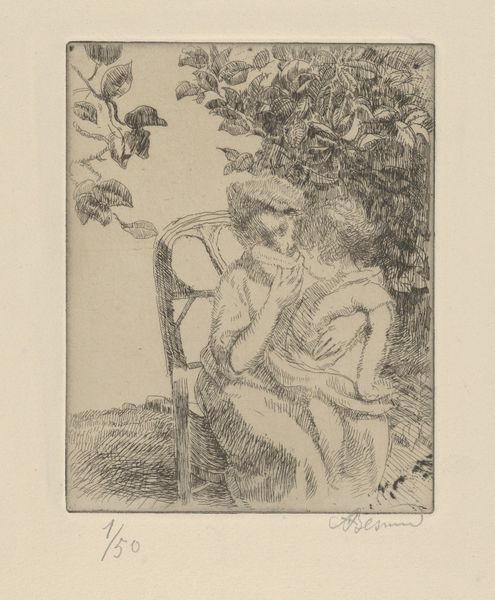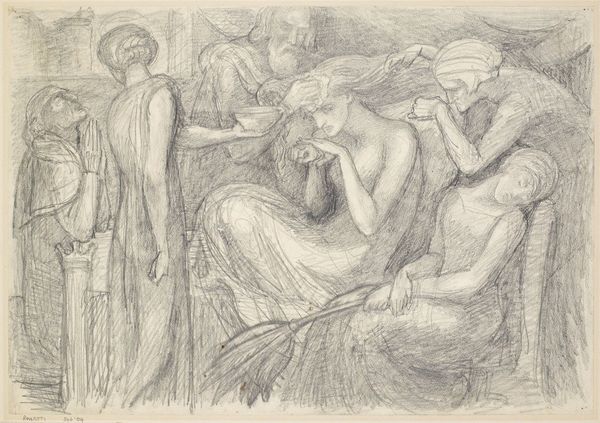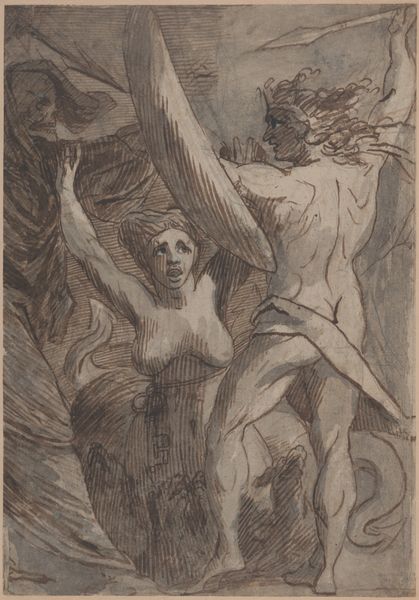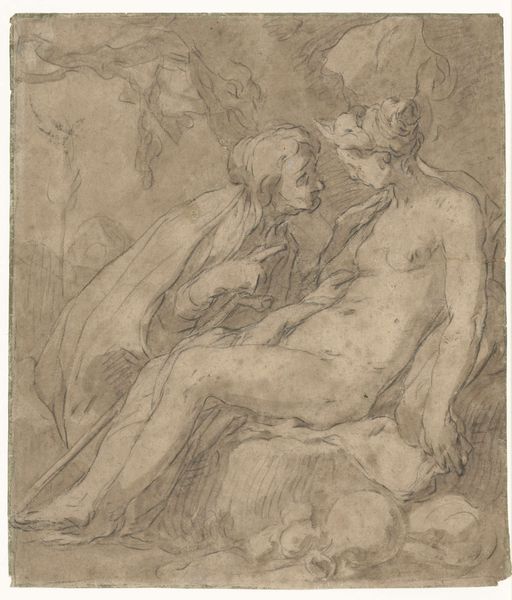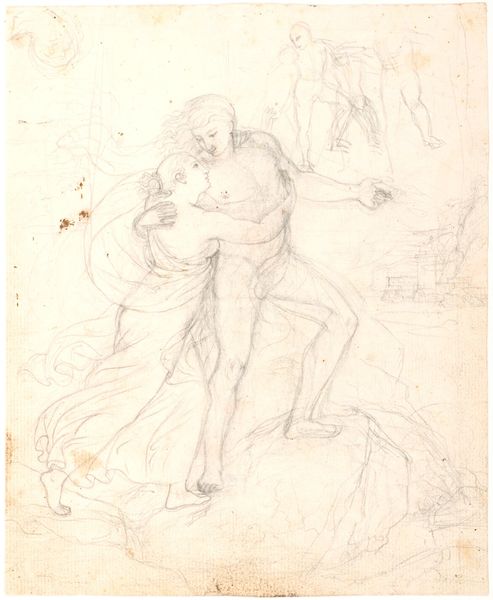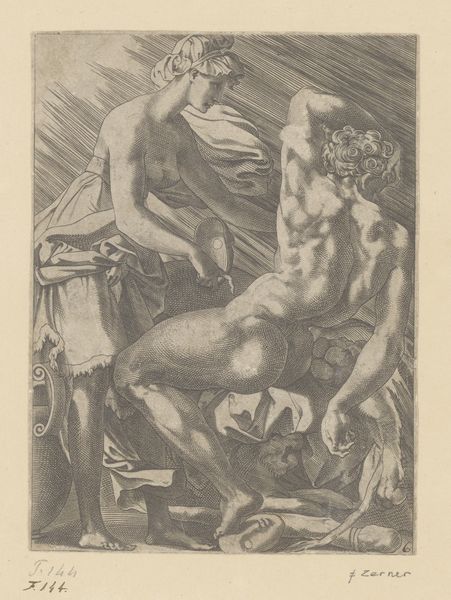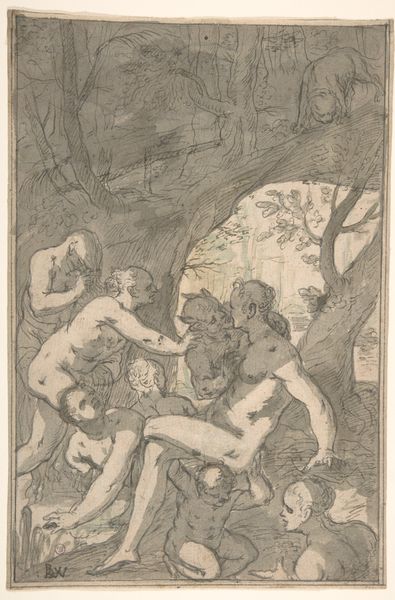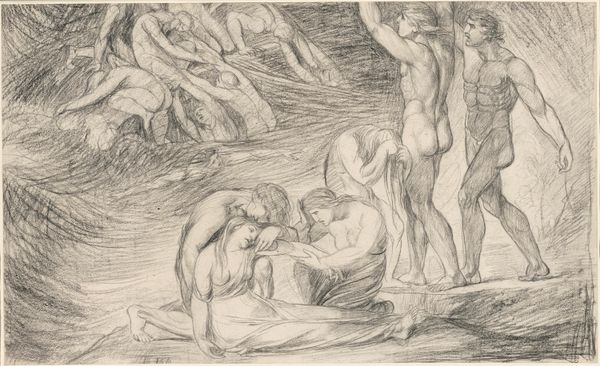
Study for The Question (The Sphinx); verso: Study for "Astarte Syriaca" 1875
0:00
0:00
Dimensions: 40.1 x 35.2 cm (15 13/16 x 13 7/8 in.)
Copyright: CC0 1.0
Editor: This drawing by Dante Gabriel Rossetti, "Study for The Question (The Sphinx)," feels both classical and unsettling. There’s this mythical creature, a posed man with a spear, and another collapsed figure. What historical contexts might illuminate this complex scene? Curator: It's fascinating how Rossetti intertwines classical mythology with Pre-Raphaelite aesthetics. Consider the rise of spiritualism and Victorian anxieties surrounding knowledge and the unknown. The Sphinx, traditionally a gatekeeper of wisdom, here becomes a symbol of the era's intellectual and existential questioning. How does the image engage with contemporary debates about art's role in challenging or reinforcing societal norms? Editor: So, the Sphinx isn’t just a mythical figure, but a representation of Victorian intellectual conflict? Curator: Precisely! It challenges the viewer to confront uncomfortable truths, reflecting art's expanding role as a social commentary. The male figures around the Sphinx are also telling: are they victims, challengers, or worshippers of knowledge? Editor: This really changes how I see the drawing. It's not just a mythical scene, but a commentary on Victorian society's relationship with knowledge and the unknown. Curator: Exactly! Now the question is, did Rossetti intend the viewer to find answers, or simply to question?
Comments
No comments
Be the first to comment and join the conversation on the ultimate creative platform.

